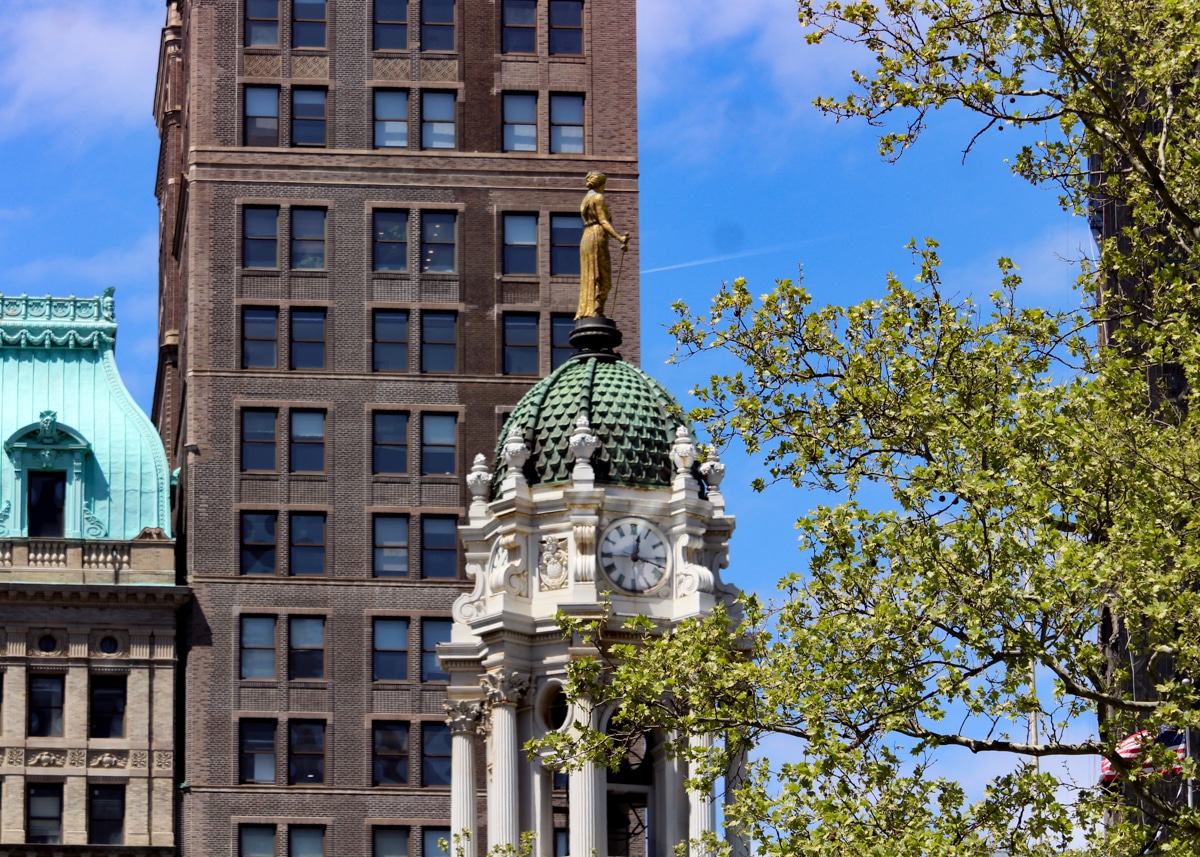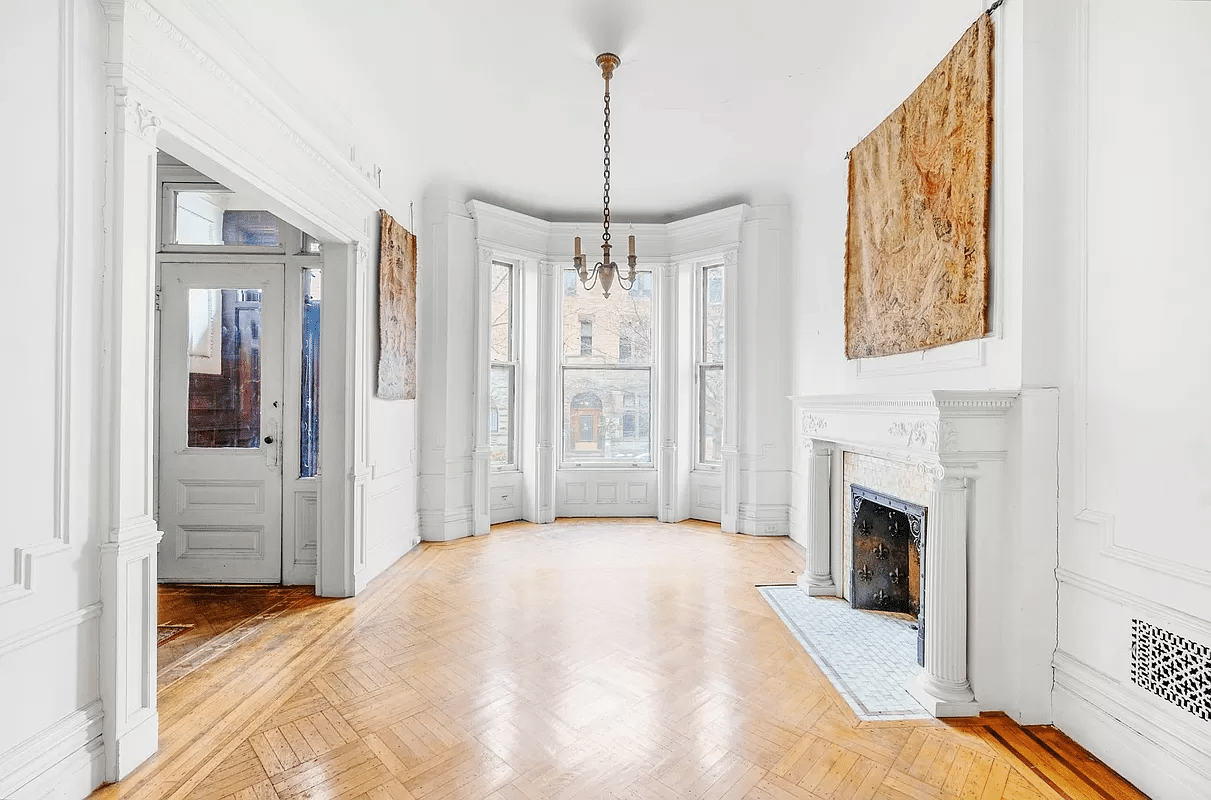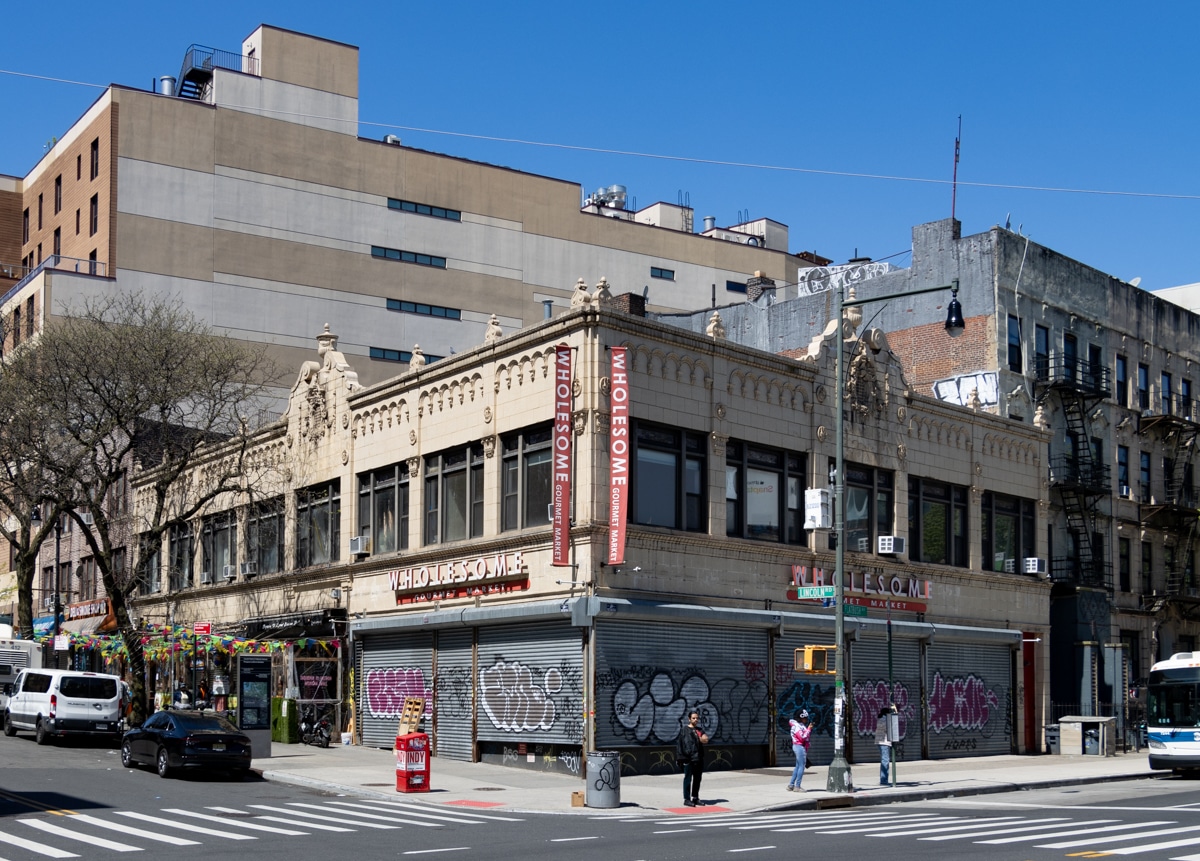Walkabout: The Lefferts Family, Flatbush Branch
Read Part 1 of this story. The Lefferts family was once one of the wealthiest, and most important and influential families in Brooklyn. Up until the latter part of the 19th century, various branches of the family owned the land that would become Bedford-Stuyvesant, Crown Heights, and Prospect Lefferts Gardens. All of the Brooklyn Lefferts’…

Read Part 1 of this story.
The Lefferts family was once one of the wealthiest, and most important and influential families in Brooklyn. Up until the latter part of the 19th century, various branches of the family owned the land that would become Bedford-Stuyvesant, Crown Heights, and Prospect Lefferts Gardens.
All of the Brooklyn Lefferts’ are descended from Leffert Pietersen Van Haughwout, who immigrated to Brooklyn from Holland in 1660, one of the early colonists in the Dutch settlement of Flatbush. He and his wife had fourteen children, starting a dynasty that continues to this day.
After only two generations in America, the family formally took the name Lefferts as a surname. One branch of the family moved with Leffert Pietersen to the town of Bedford, where he and his sons and grandchildren continued to buy up land, farm the land with their slaves, and enjoy the status of being the richest men in the town.
These descendants would include a signer of the Declaration of Independence, as well as wealthy farmers, Brooklyn’s first county judge, county clerks, soldiers, engineers and doctors. By the end of the 1850’s, the Lefferts family had sold off much of their land in the Bedford area, making it possible for the later rowhouse development of Crown Heights North, Stuyvesant Heights, and parts of Bedford, itself. South of Bedford, another branch of the Lefferts family was making its mark on the Flatbush area.
Twelve of Leffert Pietersen and his wife’s fourteen children were male, passing on the family name. When he and at least two of his sons moved to Bedford, he left behind the family homestead, built sometime in the late 1680’s, in what is now Prospect Lefferts Gardens.
The house stood approximately where Maple Street and Flatbush intersect. Leffert Petersen’s son, Pieter Lefferts (1680-1774) kept the family holdings and lived in the house. He was the Treasurer of Kings County from 1737 to 1772.
The house then passed to John Lefferts (1719-1776), a delegate to the Provincial Congress and a judge of the Court of Special Sessions and Common Pleas. At his death, the house and farmlands passed to another Peter Lefferts, born in 1753, the great-grandson of Leffert Pietersen of Holland.
In 1776, at the beginning of the Revolutionary War, the British invaded Brooklyn, culminating in the Battle of Brooklyn, most of which took place in parts of what are now Gowanus, Greenwood Heights and Prospect Park. Before that battle in August of 1776, American troops burned the Lefferts Homestead down to prevent the British from acquiring it.
After the war, Peter Lefferts rebuilt the house and his lands. He was now one of the wealthiest men in Kings County, with a 240 acre farm, and a large household that included eight family members and twelve slaves.
He was well-known in Kings County, having served as a first lieutenant in the Continental Army, then following his father’s footsteps as a judge of the Court of Special Session and Common Pleas. In 1778, he was a delegate to the state convention in Poughkeepsie, when New York ratified the United States Constitution.
He was also one of the original contributors and trustees of Erasmus Hall. Peter Lefferts died in 1791, and the estate passed to his six year old son, also named John.
John Lefferts (1785-1829) was a congressman and a state senator, serving between 1821 and 1826. He was well regarded, and was known as Senator John to distinguish him from the other family members named John. He had two children, both of whom made their mark on Brooklyn.
His daughter, Phebe Lefferts Vanderbilt was the author of The Social History of Flatbush, which included stories told by her grandmother, Femmetie Lefferts. They would provide historians with valuable stories about the community, the lives of family members, enslaved and free Africans, Europeans, and Native Americans who lived and worked on the farm or in Flatbush.
She spent over 35 years of her life devoted to her favorite charity, the Industrial Home and School for Destitute Children. She died in 1902. Her brother, John Lefferts (1826-1893) inherited the farm at his father’s death. He spent his entire life in the family farmhouse.
He was very active in the Dutch Reformed Church, and donated the land for the Grace Memorial Chapel, at Bedford and Lincoln Road. He was known to be a very kind and pious man, according to a local account, generous to the poor and struggling, white and colored alike.
He was also quite a businessman, and was on the board of the Brooklyn Bank, which his family had established, and was a trustee, or director, of the Long Island Insurance Company, the Long Island Loan and Trust, Flatbush Gas Company, Flatbush Water Works Company and the Brooklyn Safety Deposit Company.
His eldest son, John Lefferts, Jr, was a prominent Brooklyn lawyer, a partner in the firm of Sutphen & Lefferts. It is John Jr.’s son, James, along with his six brothers and sisters, who would sell the farm, and establish Lefferts Manor.
In 1893, only six months after John Jr.’s death, James divided the farm into 600 lots to be developed as a high-end residential development called Lefferts Manor. James set down a very specific covenant to restrict anything he felt was inappropriate to this endeavor.
Most people know about the restriction that requires all of the homes to be built as, and remain, single family dwellings, but there was much more to the covenant than that. The deed prohibits stables, pig-pens, forges, iron foundries, fertilizer, gunpowder, saltpeter, candle, soap, ink, glue and varnish factories, as well as tanneries, breweries, hospitals, theaters, apartment buildings and tenements.
There were also rules regarding the price of the houses, the size, distance away from the sidewalk, placement of stables and fencing.
Lefferts hoped that these restrictions would promote an even development, and would attract a strong middle-class community, providing stability and comfort. The restriction preventing multiple unit housing was especially designed to stop the encroachment of two family houses which were being built in nearby Crown Heights and in surrounding Flatbush neighborhoods.
Building in the neighborhood came to a crashing halt in 1903, when a devastating recession halted everything, but started up again, especially between 1905 and 1911. The architecture was varied, ranging from the classic rowhouses, most famously, those by Axel Hedman, to the neo-Colonials of Slee and Bryson, to the mock Tudors of architect Peter J. Collins.
In 1918, the Lefferts family donated their farmhouse to the City of New York. An apartment building was planned for the corner of Flatbush and Maple. The city moved the house to Prospect Park, where it now stands in the park near Flatbush Avenue, Ocean Avenue and Empire Blvd.
It is now a house museum, with interactive exhibits and historic re-enactments, based on the tales told in Phebe Lefferts Vanderbilt’s book, which chronicle the lives of the Dutch, African and Native American residents of Brooklyn in 18th and 19th centuries. This house is one of the very few Dutch colonial era houses left in Brooklyn.
Without the huge farms and estates, the Lefferts families settled into comfortable quiet wealth. They were the subject of Teunis Bergen’s genealogy of the family from 1650-1878, published in 1878. Their name also appears in other books, including The History of Long Island by Peter Ross, published in 1903.
There are still Lefferts family members in Brooklyn, and many more in Pennsylvania and around the country. It’s rather amazing that a family this important to the history and development of Brooklyn would be so forgotten today, except for the street and neighborhood names they left behind. They were certainly an interesting family.
Sources for parts 1 and 2 of the Lefferts Family: Designation Reports; Crown Heights North, Prospect Lefferts Gardens, NYC Parks Dept, Brooklyn Eagle, A History of Long Island, by Peter Ross.
[Photos via eBay]











One additional point; the Lefferts family continued to defend the single family covenant as long as they occupied their house on Flatbush @ Maple St. Once the house was donated and moved the Lefferts Manor Association was formed [in 1919] by residents to perform that function. That’s also when the “Lefferts Manor” name was coined for the 600 houses on the former Lefferts farm. Previously it had been called “the Lefferts Estate”, or “Prospect Park East” in real estate ads.
Magnificent job MM–I’m so sorry I didn’t have time to read Brownstoner yesterday and didn’t see this until this morning.
One small point–AFAIK the writer of The Social History of Flatbush was Gertrude, rather than Phebe, Lefferts Vanderbilt. I searched for a copy of that book for years before settling for a reprint copy a few years ago.
I have something to add to Bab’s comment about “mortgage buttons.” I was told that houses were built with wooden buttons on the newel post which were replaced with ivory ones when the mortgage was paid off. I’ve seen these buttons in mid 19th century brownstones, although the practice seems to have died out by the time my house was built in 1899.
Also, about the Lefferts Homestead; there are interesting photographs in that house museum showing extensive added wings to the house, which were demolished when the house was moved. I sometimes wish it was still on Flatbush, between Maple and Midwood, instead of the present Maison Charles dry cleaners.
Thanks WB’er. But if I may pick my own nits here, (sounds awful) I never used the words “Dutch Colonial”. Ha!
Yes, slavery was very complicated. Regarding the Lefferts family, I came across a comment in my research that the Lefferts had slaves late in the game, compared to other Dutch settlers/farmers, and freed them earlier than some of the others, as well. They speculated that the War of Independence resonated with those family members that had fought in it, and they were uncomfortable with slavery after that. Hmmm. Interesting. Like I said, MUCH more research to be done.
Great post as always, MM. But you hit a nerve on the “Dutch Colonial” – as others have said, this is not colonial and is only Dutch by virtue of genealogy (and alteration). Same is true of the Lott house (which I worked on once upon a time) – another post-Colonial era house for a Dutch-descended family.
But picky issues of nomenclature aside, these are great buildings. And they do relate more to the Colonial era than to the early Federal era of the time in which they were built.
As for slavery, it is a very complicated issue in Brooklyn. Many Dutch (and many other Colonials) owned slaves, and slavery continued to a very late date in Brooklyn (particularly on the Dutch farms). But Brooklyn was also the hotbed of the abolitionist movement in New York (and the North), in stark contrast to Manhattan, which was much more pro-South or ambivalent on the issues. And throughout all these areas, you had thriving free Black communities – in places like Weeksville, Sandy Ground, etc.. I came across a church in Williamsburg that was founded by African American freedmen in the 1830s or 1840s.
The original Old Stone house (Cortelyou) burned down. The Old Stone house that stands today is a reconstruction. Both host interesting events at least.
The Old Stone House and the Onderdonk house are in some ways a tad disappointing as little authentic remains of the insides. Though at Onderdonk they let you see the unfinished cellar, which is cool. Perhaps the Lefferts house fared better, since obviously it was never used as a bar or storage facility?
Babs, I heard a variation of that newel post button thing this weekend. What I heard is that you were store your mortgage in your newel post. Then when you paid it off, unscrew the top of the newel post and burn the mortgage.
It is also often overlooked that the Dutch were the prime slave traders in the world. They owned most of the ships that brought slaves from African ports to New World ports in North and South America.
Much of the incredible wealth accumulated by the tiny Netherlands during the period 1600-1800 was due to the lucrative slave trade.
clarksonflatbed, I covered the Bedford branch of the Lefferts family last Thursday, (see link above) and talked a bit more about their slaves. One of these days I’m going to do a piece about slavery in Brooklyn, but that takes a lot of research, and I want to do it justice, so it’s going to have to wait a bit. Brooklyn had the highest percentage of enslaved people in all of New York colony/state, oddly enough, and it was more because of farming than having lots of servants running around waiting on people. The farther upstate you go, the less slavery, as it was wilderness up there, and most people, if they needed farm help, had tenant farmers, or worked the land themselves.
Regardless, from what research I have done, it seems that there were never slave quarters like the plantations down south, anyway. Most slaveholders had only one or two slaves and they lived in attics, barns or a room(s) in back of the house. At 12, the Lefferts were huge slaveholders. It would be interesting to find out where they lived. Gotta do more research on that, but that seems to be the situation in Brooklyn.
The ridge at Crow Hill, now around Eastern Parkway and Bedford, was one of the vantage points, but the main battles took place farther west. The most important hills in that battle were Battle Pass, now in Prospect Park, and Battle Hill, the highest point in Brooklyn, where the statue of Minerva stands, in Green-Wood Cemetery. The main and horrific battles themselves took place below the hill in the swampy land of Gowanus. For a good overview, Wikipedia has an excellent article on the battle.
http://en.wikipedia.org/wiki/Battle_of_Long_Island